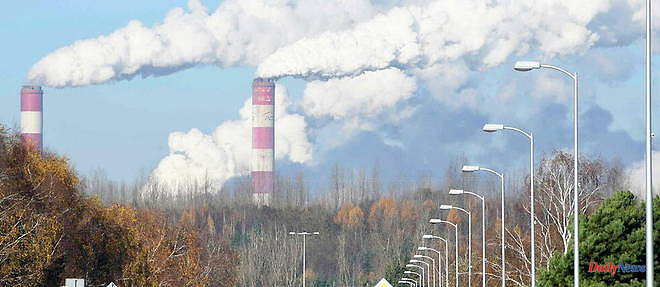When Russia invaded Ukraine in February 2022, energy prices skyrocketed. That of the CO2 quota on the European carbon market has lost a good third of its value. Some then believed that the system was not going to resist the surge in energy prices.
A year later, the quota price is doing well. Since the start of 2023, it has gained more than 15%. On February 27, the price of the one-year futures contract reached the symbolic mark of €100/t. The spot price, settled in cash, reached an all-time high of 97 euros.
To understand these price movements, it is necessary to recall the principles on which the European carbon quota market, the main instrument of the European climate change mitigation strategy, is based.
Complex in its implementation, the basic principle of the CO2 quota trading system is actually very simple. It is a rationing mechanism with flexibility.
Rationing is imposed on manufacturers subject to the system by setting an overall emission ceiling not to be exceeded. If this cap is binding, it creates scarcity on the market, which drives up the price of the quota. If it is lax, the price will on the contrary tend to fall. If there is no longer any constraint, the price will tend towards zero.
During the 2010 decade, the device was not binding for a basic reason. The European Union's climate target – a 20% reduction in greenhouse gas emissions between 1990 and 2020 – was not binding. The best proof: the objective was achieved as early as 2013 as indicated by the European emissions inventory which serves as a judge of the peace in this matter. No need for a quota system to aim for an already achieved goal!
Faced with this situation, the Commission managed to put some patches to the system by setting up a "stability reserve" from 2018. This reserve withdrew allowances from the market, which raised the price to around 20 €/t.
The situation changed completely in December 2021 when European heads of state raised the emission reduction target to 55% by 2030, against 40% previously. The pledge was filed with the United Nations as part of the European Union's contribution to the achievement of the Paris Agreement. It is therefore set in stone.
The market was quick to react. The quota price rose in a few months to above €80/t. At this price, carbon-free electricity becomes very profitable compared to that produced from gas or coal.
The rise in the quota price also increases the cost of producing steel in blast furnaces where coal is used both as fuel and as a reducing agent for iron ore. In France, the two most CO2-emitting facilities are the two ArcelorMittal blast furnaces based in Foss and Dunkirk. As soon as the price of the CO2 quota exceeded 80 euros, the industrialist pulled out of his boxes investment projects to convert these two industrial complexes to low carbon.
Then comes the war in Ukraine. The prices of coal and gas used in Europe are soaring, due to the EU's heavy dependence on Russian supplies. That of oil is also rising, but to a lesser extent. This surge in prices darkens the macroeconomic outlook and encourages a reduction in gas and coal consumption.
These two economic variables logically lead to a downward correction of the quota price. There is also a political factor. Faced with soaring energy prices, European governments are competing in inventiveness to set up price shields to protect citizens and industrialists from soaring prices.
Among the panoply of measures, some countries want to suspend the quota system which increases the cost of fossil fuels. This is particularly the case of Poland, which officially calls for it during the European Energy Council in August 2022.
These attempts are unsuccessful. Not only is the system not suspended, but the European Parliament and Council reach a political agreement on December 17, 2022 to implement the reform proposals prepared by the Commission. This reinforces the political credibility of the CO2 quota market.
In addition to strengthening political credibility, the sharp rise in the quota price in January and February 2023 also responds to the fall in the price of coal simultaneously observed on the energy market.
The easing of the price of coal appeared as soon as the risks of a supply disruption on the electrical system, high with the approach of winter, were attenuated. It was strong and fast, as the industry had built up precautionary stocks in northern Europe which were not used.
In an economy without carbon regulation, a falling coal price means more consumption and therefore more greenhouse gas emissions. Especially when there are possible substitutions between fuels, which is the case on a fairly large scale in Europe between coal and gas.
With the quota trading system, the European Union will largely escape this perverse chain. The fall in the price of coal is indeed thwarted by the increase in CO2 quotas. The quota trading system thus acts as an anti-coal weapon. This is valuable at a time when we need to accelerate the energy transition to achieve the -55% reduction in net greenhouse gas emissions by 2030.
* Christian de Perthuis is Professor of Economics, Founder of the "Climate Economics" Chair, Paris Dauphine University - PSL












